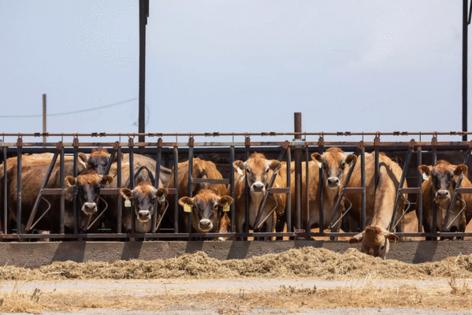Bird flu's disturbing new turn into cattle
Published in Business News
U.S. health officials are closely monitoring the recent leap of avian flu from birds to cattle — and earlier this month, to a Texas dairy farmer.
The Centers for Disease Control and Prevention stresses the current public health risk is low — the virus isn’t known to spread among people or through the food supply, is rarely caught from exposure to infected animals, and where human infections have occurred, is often mild and manageable.
But the leap of the H5N1 influenza strain, widespread among wild fowl and a regular threat to domestic poultry, into cattle was unexpected, and a worrisome development, as the more the virus spreads, the more chances it has to mutate. The COVID-19 pandemic was a stark lesson in the risk of “spillover,” when pathogens spread from animals to humans.
People have frequent contact with cattle, creating opportunities for more exposure. Experts suspect that it may be transmitted among animals in a herd, or by contaminated milking equipment.
California, the nation’s leading milk producer, is working out the details of a testing program for all incoming animals to comply with a new federal requirement, according to the California Department of Food and Agriculture.
Worried dairy farmers are taking biosecurity steps to help protect herds, although testing of the state’s animals remains voluntary.
Some farmers are putting tarps on their water supplies to fend off migratory birds and are requiring sanitary precautions such as disinfecting tools and boots for people who travel from ranch to ranch, like hoof trimmers, according to Anja Raudabaugh, CEO of Western United Dairies in Turlock.
But there is no state or federal requirement to routinely sample cows or milk. Clinical signs of flu occur in only a fraction of cases, so some experts fear that the virus may be hiding in untested animals.
Avian flu used to be just a bird problem. But now it’s been detected in 33 dairy cattle herds in eight states. It doesn’t kill cows, but causes a dramatic reduction in milk production.
While California remains off the list of infected states, “it’s a very dynamic situation that could change from day to day,” said Dr. Terry W. Lehenbauer, director of UC Davis School of Veterinary Medicine’s Veterinary Medicine Teaching and Research Center in Tulare.
...continued
©#YR@ MediaNews Group, Inc. Visit at mercurynews.com. Distributed by Tribune Content Agency, LLC.







Comments